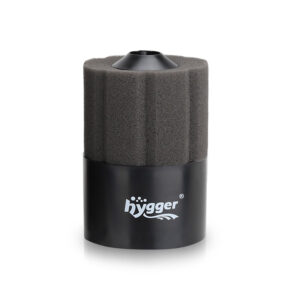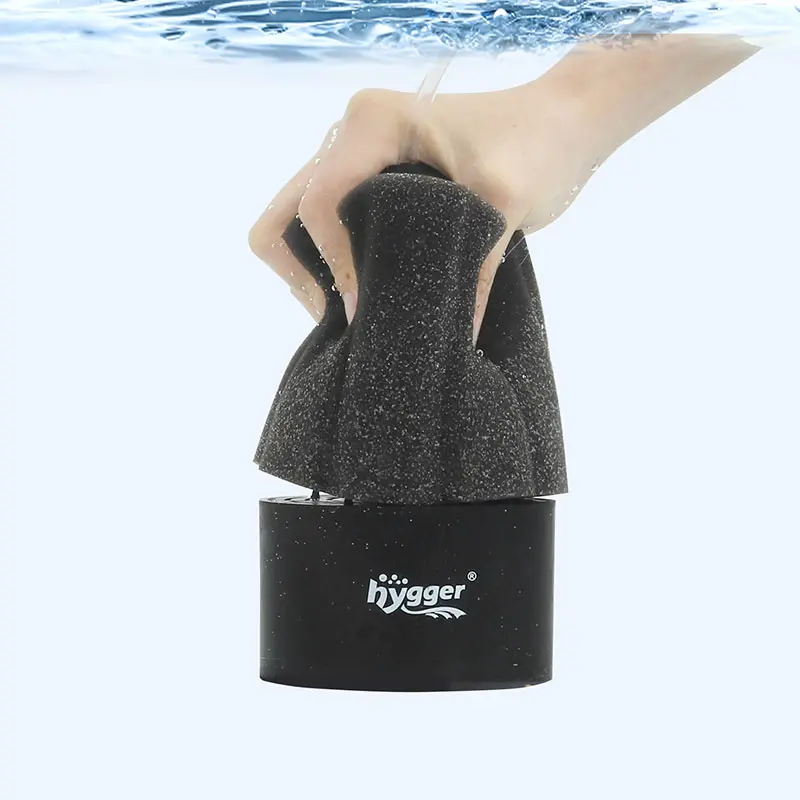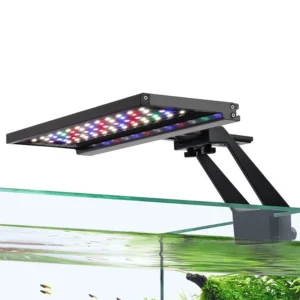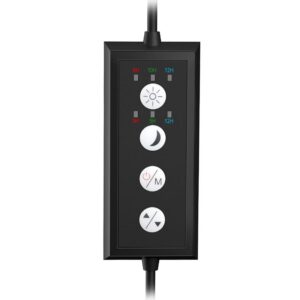Aquarium Fish Profile – Beautiful Guppies Fish
Guppy fish are one of the most common aquarium fish. Their striking colors and peaceful nature make them suitable for beginners. This tropical fish feasts on multiple foods. In this article, you’ll learn about guppy fish types, their lifespan, and suitable tank conditions for guppies fish.
Moreover, several other interesting facts about this beautiful guppy fish are at the end of this article.
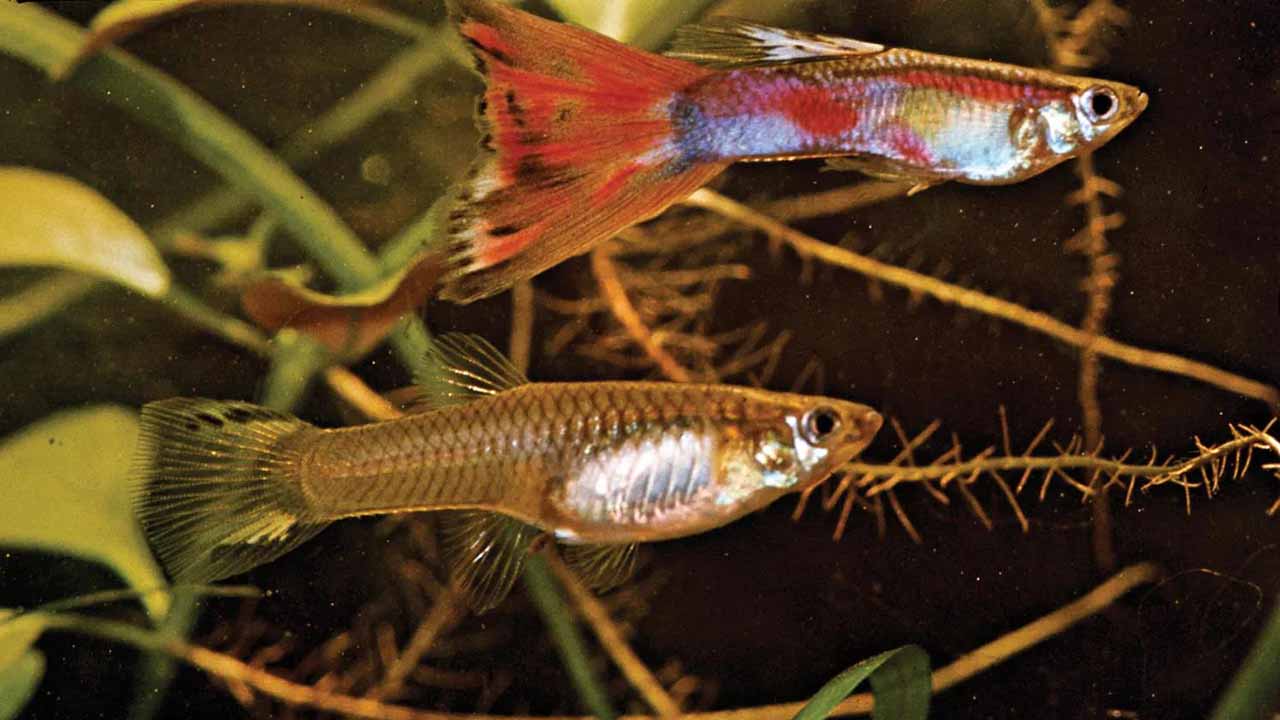
Beautiful Guppy Fish
Guppy fish are common among aquarists. The scientific name is Poecilia reticulata, and they belong to the Poecilia family. Their small size, colorful appearance, and peaceful nature are reasons behind their popularity. Millonfih and rainbow fish are also guppy fish names.
Are Guppies Good Fish?
Yes, guppies are good fish. They suit most beginner aquarists. They require low maintenance and are easy to care for. Above all, they can bear beginner mistakes. Other than that, they are hardy, prolific, often peaceful, schooling in nature and active swimmers. Their vibrant colors make a tank focal point. Aside from these points, you can buy them on a budget, and they will also help you with mosquito control.
Origin
Naturally, guppies are present in coastal streams of northeast South America. They were discovered in Trinidad in 1859. Their last name is after their discoverer, i.e., Robert John Lechmere Guppy. However, now they are present in tropical regions around the globe.
Food
Guppies consume a diverse variety of food, as they are omnivores. Their food includes the following items.
| Pellet food | Frozen brine shrimps | Algae | Frozen blood worms | Zucchini, Lettuce, Peas |
| Mosquito Larva | Froze daphnia | Spirulina | Vegetables | Cabbage, Carrots, and Broccoli |
In feeding, there are some considerations, which are as follows.
- Keep diversity in their food.
- They eat less but frequently. Therefore, feed them 3–5 times daily.
- Only feed such quantity that they can consume within a minute or two via a fish feeding ring.
Breeding
Guppies are livebearers. Here is a procedure for guppy breeding.
- Choose one male against three females. 1:3 splits the aggression of males that you can observe in a 1:1 ratio.
- Set the tank water parameters, i.e., 7.2 pH, 8-12 GH, and 23.5–25.5°C.
- Usually, a guppy can impregnate any female. However, in an unusual condition, introduce another male in the breeding tank.
- After 20–30 days of the gestation period, females give birth to 1-100 live fish.
- To keep them alive, keep them in separate breeding tanks. For different life stages of fish, set the following ideal temperatures.
Fry: 25.5°C Juveniles: 24.5°C Adults: 23.5°C
Guppy Fish Types
Guppies have about 276 different species that are present in tropical regions. They can be classified into many ways, i.e., color, patterns, and tail shape. Some of the most common aquarist species are in the following.
Albino Guppy Fish
| They come in almost every color Their eye coloration is red instead of black Lack melanin |
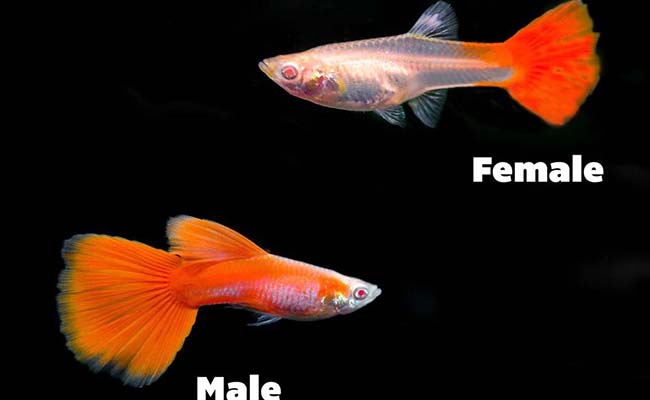 |
Black Guppy Fish
| They are named after their black color Smaller than the rest of the guppies They are black except for the face coloration, i.e., blue and green |
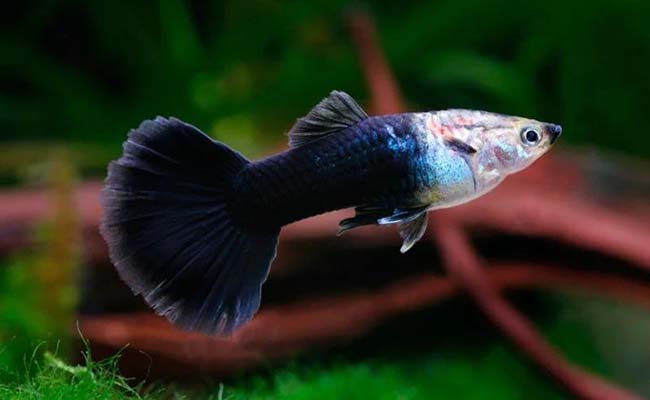 |
Bronze Guppies
| Their body, head, and back scales are usually bronze. They come in a mixture of colors with distinguished bronze color, i.e., 25%. |
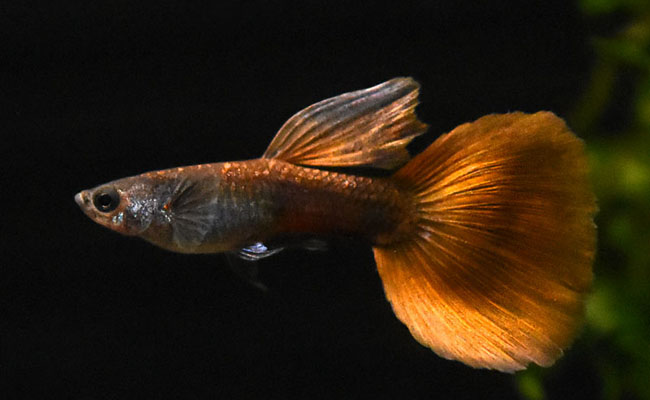 |
Swamp Guppy
| They are suitable for biotope aquariums. A tank with some algae and gravel can be an ideal house for them. They have other names, i.e., scarlet livebearers. They have rich orange or red coloration. |
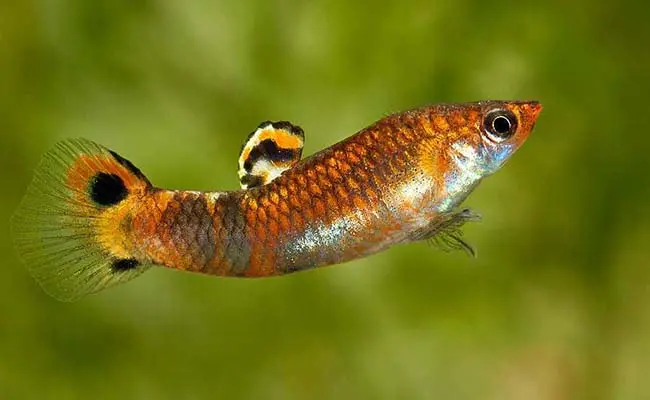 |
Endler Guppy
| They are named after Professor John Endler. The males are half of the females. They have metallic and silvery colors. |
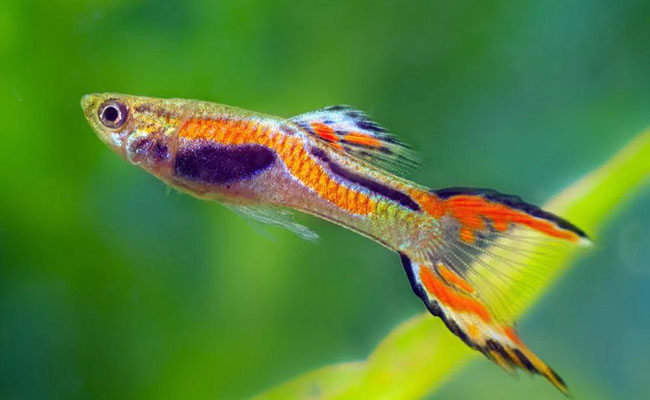 |
Fantail Guppy
| They come from pale blue to the deepest purple and red color. Males have elaborated cuddle fins. They thrive in clean and freshwater tanks. They have symmetrical, isosceles triangle-shaped tails. |
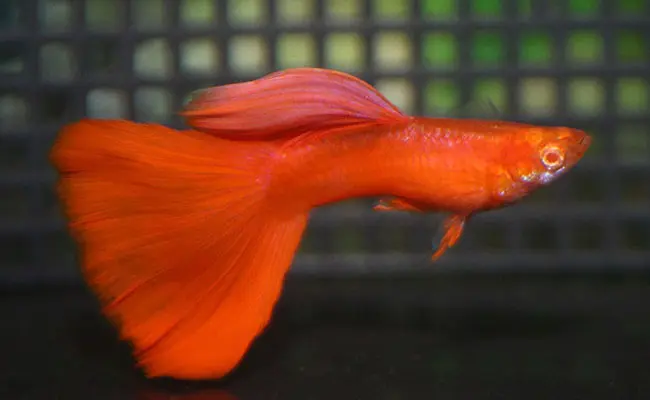 |
How Long Does Guppy Fish Live?
In the wild, they live about 2 years. However, in the case of providing ideal situations, they can live up to 5 years. Here are the different life stages of guppy fish.
Life Stages of Guppy Fish
There are four distinct life stages of every guppy fish. The rate and span of each stage can be varied among different species.
Fry
Fry is the first stage of every guppy. At this stage, they are ¼ inch in length. At birth, they have deformed and folded bodies. After a few hours, they get their actual body shape. Guppy fry have a high survival rate because they can freely swim at birth.
Juvenile
They achieve the juvenile stage within 1 to 2 months. At this stage, they began to develop colors. Moreover, gender distinction becomes visible at this stage. Males have gonopodium, while females have gravid spots at the tail.
Teen
After six weeks, they reach the teen stage. At this stage, they become sexually active. Males began to reproduce, while females gave birth to their first fry after almost 3 months.
Adult
This is the final growth stage. Guppies reach this stage after six months. Growth is there but at a slower rate. Moreover, at this stage, they reduce their sexual activities.
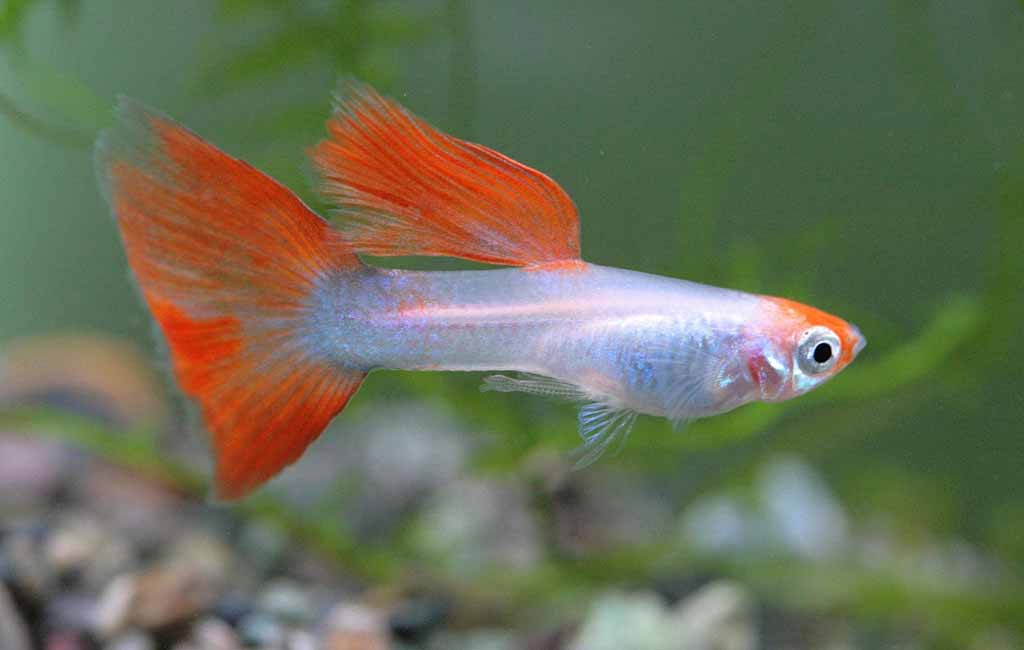
Is It OK for Guppy Fish to Live in a Bowl?
Bowls are only ok for shorter periods, i.e., for a month. Otherwise, keeping guppies in the fish bowl is not a good option because there is an oxygenation problem, water becomes dirty too early, and these active fish need more swim space. Here are details about the optimal fish tank and other requirements for guppies fish.
Tank Size
Guppies are smaller, but their schooling nature requires some extra size. The tank size varies on the size of the groups. At least a 10-gallon tank is suitable for a small group of 3–5 guppies. However, you need to enlarge it up to 20 gallons in case of other species.
Water Parameters
Guppies are tropical freshwater streams, guys. They thrive at the following water parameters.
| pH: 7.0 and 7.8. They can tolerate even 8,9, or less than 7 | Hardness: Moderate hardness, i.e., 150-200 ppm |
| Temperature: 22°C to 28°C | Light: 8–12 hours of light after 16 to 12 hours of darkness |
Filtration
The sponge filtration system is most suitable because it doesn’t suck the fry. Moreover, these fish are smaller and don’t create too much waste. Remember, the filtration system should be up to the mark because they are sensitive to poor water conditions.
Substrate and Decor
You can choose multiple substrates, i.e., gravel, sand, tiny rocks, plant substrate, clay-based substrate, soil-based substrate, and dirt. However, sand stands out from the rest because it doesn’t cause harm if they swallow it. Moreover, it provides better support to plants and is easily replaceable.
Fill the bottom with rocks, caves, and other decors. Live plants can do well with oxygenation and rejecting toxin elements from the tank.
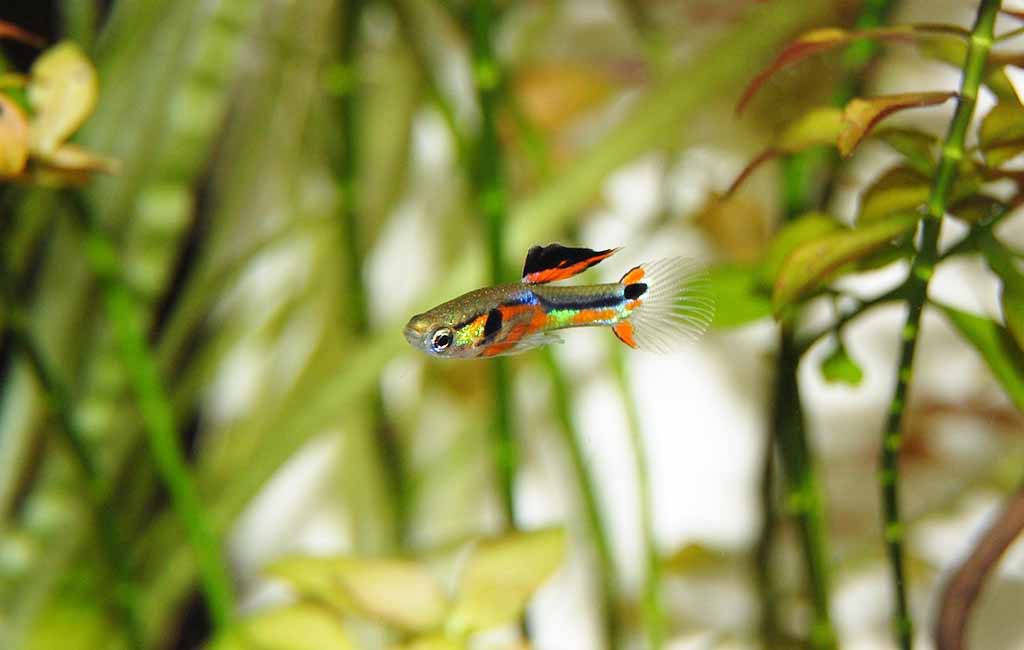
Can Guppies Fish Be With Star Fish?
No, they can’t live together due to opposite water parameters conditions. Guppies live in freshwater, while starfish live in extreme saltwater conditions.
However, there are some other suitable tank mates for guppy fish.
Suitable Tank Mates
Only guppy tanks can be very colorful as they are in various colors. However, if you want to introduce some companions, then remember the following aspects.
Temperaments
Guppies are peaceful and free swimmers. However, sometimes, they attribute mischievous behavior by nipping the fins of closely moving fish. It’s better to accompany them with peaceful and active companions.
Size
Guppies are small fish. Therefore, always choose a companion that has a relevant size because big fish always try to feast on small fish.
Competition
They have a competitive nature. Therefore, add a companion who is active like them. Otherwise, they will bully the odd one.
Diet and Other Parameter Compatibility
The new one must have compatibility with food and water parameters. It’ll create an ease to manage the tank. Here is a list of such companions.
| Swordtail | Cherry Shrimp | Kuhli Loach |
| Platy Fish | Cardinal Tetra | Bristlenose Plecostomus (or Bristlenose Pleco) |
| Harlequin Rasbora | Bronze Corydoras | Molly Fish |
Guppies Fish Facts
- W.C.H. Peters was the first one who discovered guppies in Berlin. However, at that, they were overlooked.
- They have the nickname million fish because they breed at a higher rate. Females can give birth to 50 fry per month.
- They are easy to take care of.
- Females don’t lay eggs but give birth to live children.
- You can even see the fry eyes through the mother’s transucullent skin.
- Parents can eat their children. Therefore, populate the tank with plants or keep the fry separate.
- In 2014, the South Indian government used it to fight against malaria.
- Guppy varies in color and shape.
- Females can keep the male sperm and give birth to several broods without mating.

